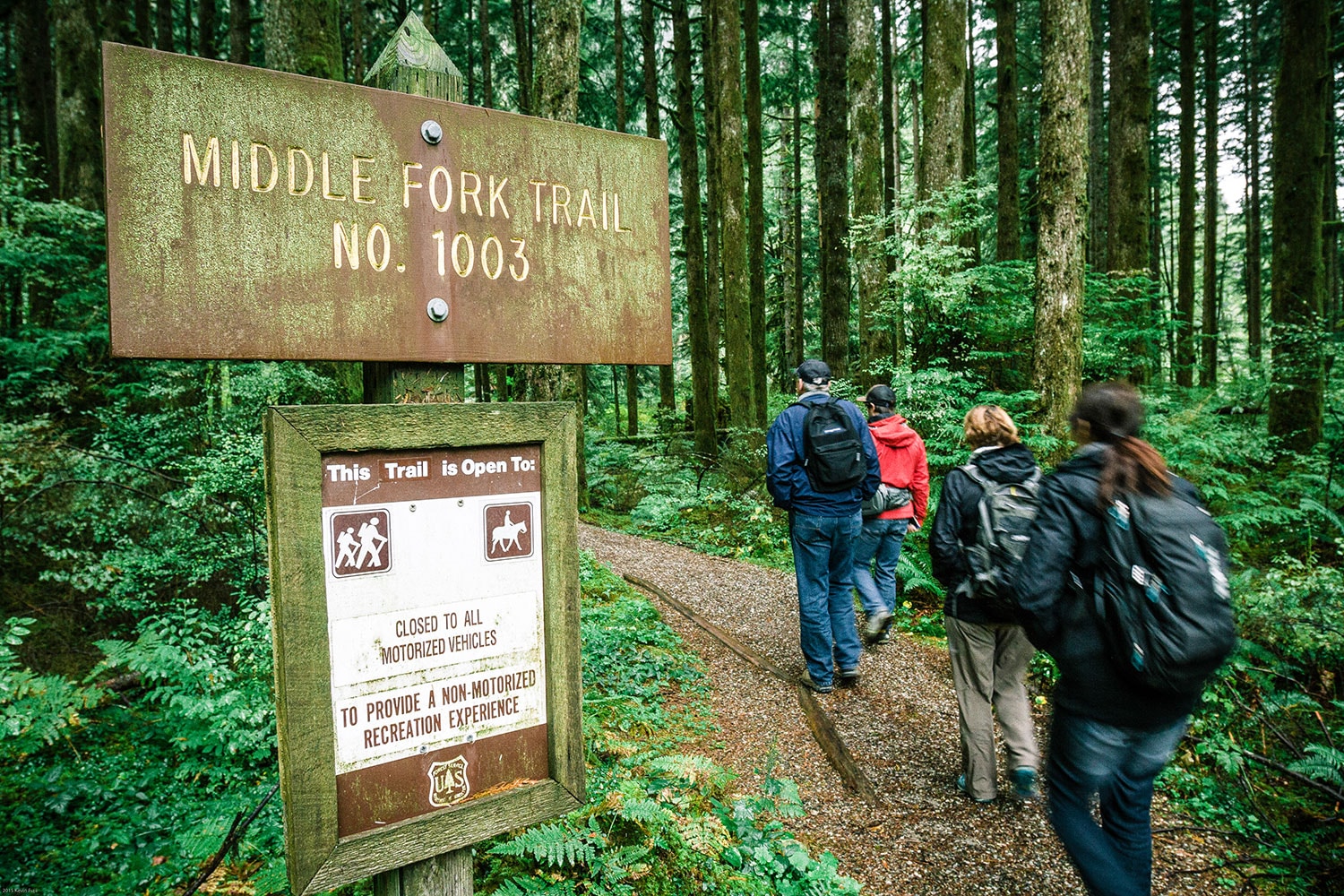Less than an hour’s drive east from the bustling city of Seattle is a gateway into pristine wilderness. The Middle Fork Snoqualmie River Valley—which boasts a network of multi-use trails weaving through lush, dense forest—offers the growing outdoor community a chance to venture into the Central Cascade Mountains.
At a recent Trail Chat as part of REI’s Every Trail Connects campaign, representatives from the Mountains to Sound Greenway Trust, Washington Trails Association, REI, and other advocacy and user groups, hiked through the scenic valley to celebrate its recent transformation and to discuss its bright and challenging future.
“Every pullout was a pile of stinking garbage,” said Greenway board member Mark Boyar to the crowd during the event on Friday, September 25. “All the abandoned logging roads were either a meth lab site, a chop shop or just a random dump site.”
However, a visitor today will see little signs of this criminal activity.
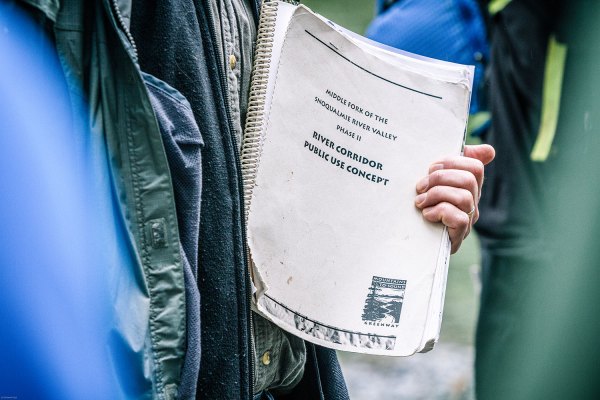
What started as an effort by a few passionate enthusiasts such as Boyar, the transformation of the Middle Fork Valley has grown into a prime example of what can be accomplished by an outdoor community working together.
“This is a partnership-led effort,” said Jon Hoekstra at the event.
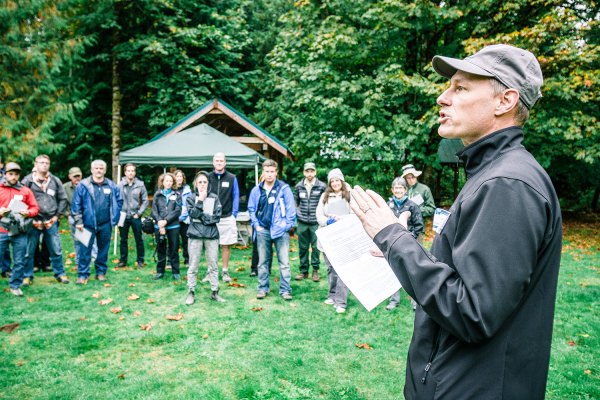
Hoekstra is the executive director of the Mountains to Sound Greenway Trust, a coalition self-described as a “conduit for groups to talk.” By bringing together the U.S. Forest Service and the Washington State Department of Natural Resources, which collectively manage 97 percent of the 110,000 acre valley, as well as local organizations passionate about the outdoors, such as the Washington Trails Association and the Evergreen Mountain Bike Alliance, the Greenway Trust has formed a powerful partnership that has initiated a major restoration of the Middle Fork Valley.
The biggest project to date is the complete overhaul of the infamously potholed road into the valley. While paving and elevating the road will alleviate ecological problems such as sediment washing into the river after heavy rains, there will now be a huge increase in the number of users driving into, parking in and recreating in the valley.
“The floodgates are about to be opened,” said Rebecca Bear, a Snoqualmie Valley resident and activist, as well as the director of education and local community development for REI.
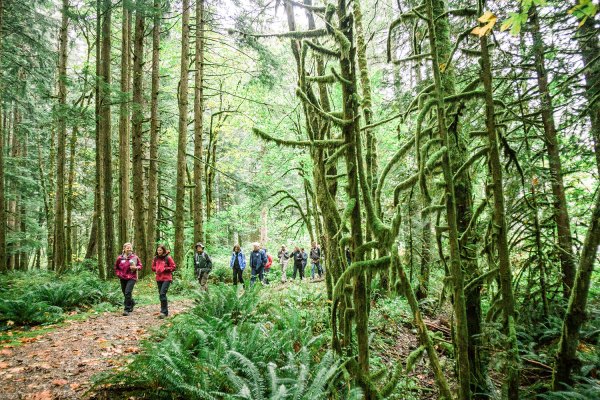
Bear introduced her kids to the outdoors by taking them on their first hike on the Middle Fork Trail. While she values the valley’s recreational potential, she is quick to point out that creating and maintaining a sustainable infrastructure for the increasing number of visitors is essential to protect the Middle Fork.
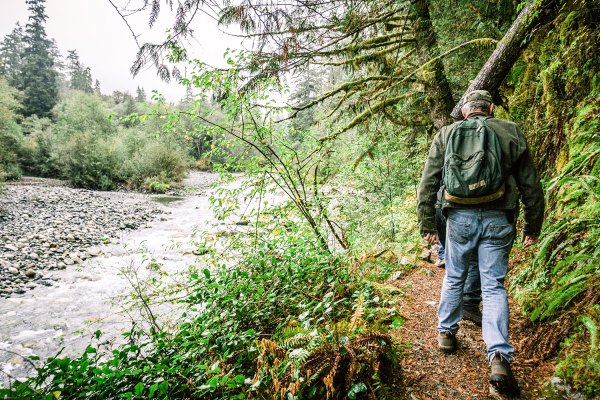
“There are roughly 120 miles of trails just in this one valley,” said Tor Bell, the stewardship director for the Mountains to Sound Greenway Trust. “We’re trying to figure out how to fund long-term maintenance on these trails.”
Bell explained that maintaining just one trail could cost $1,000 to $3,000 per year. And the conundrum, he pointed out, is that funding for management of public lands is historically at an all-time low, while outdoor recreation is increasing exponentially.
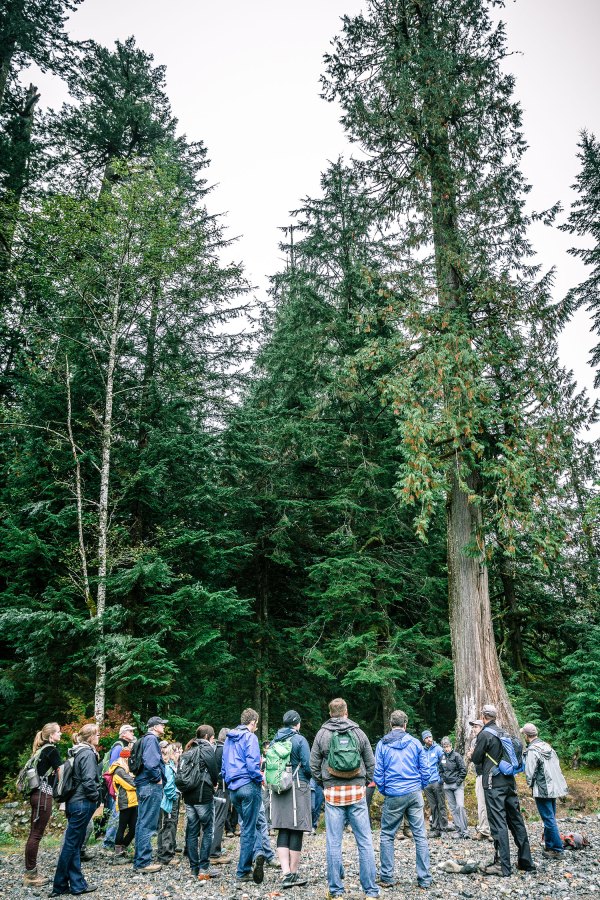
The Middle Fork Valley and its advocates may have found the solution to this conundrum, however. Their answer is partnership.
“The Middle Fork Valley is a model for the country,” said Bear at the event. She explained that the partnerships forged between the valley’s diverse user groups, which include hikers, mountain bikers, climbers and horseback riders, has been the backbone to a successful restoration campaign.

REI’s Every Trail Connects recently donated $69,000 dollars to rebuild a damaged section of the Middle Fork Trail. That donation plus hours of hard manual labor from volunteers are furthering the collective cause of restoring and maintaining this recreational treasure.
But the work is not done. As the number of users visiting the Middle Fork Valley increases, so will the need for a sustainable recreational infrastructure.
“Maintaining the Middle Fork is a public investment in a valuable economic engine,” said Hoekstra on Friday. “But this is going to have to be a partnership-led effort, because no single institution can accomplish this alone.”
